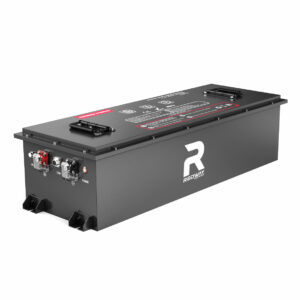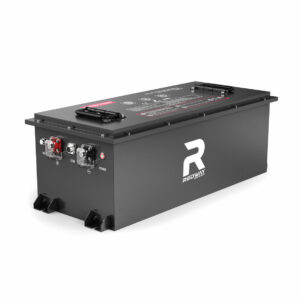Lithium-Ion RV Batteries: Comprehensive Guide for 2025
Lithium-ion batteries outperform lead-acid in energy density, weight (50–70% lighter), and lifespan. They deliver 95% usable capacity versus 50% for lead-acid, tolerate deeper discharges, and charge 3–5x faster. Unlike lead-acid, they don’t require regular watering or voltage balancing, reducing maintenance efforts.
Lithium-ion batteries maintain consistent performance across a wider temperature range compared to lead-acid. While lead-acid efficiency drops by 40% below freezing, lithium-ion retains 80% capacity at -4°F when using heated battery models. In high-demand scenarios like running air conditioners, lithium provides stable voltage until 95% discharge, whereas lead-acid struggles below 50% capacity. The table below highlights key differences:
What are the key applications and considerations for RV batteries?
| Feature | Lithium-Ion | Lead-Acid |
|---|---|---|
| Cycle Life (80% DoD) | 3,000–5,000 | 300–500 |
| Charge Time (0–100%) | 2–4 hours | 8–16 hours |
| Energy Density (Wh/kg) | 100–265 | 30–50 |
How Long Do Lithium-Ion RV Batteries Last?
Lithium-ion RV batteries last 8–15 years or 2,000–5,000 cycles at 80% depth of discharge (DoD). This is 3–5x longer than lead-acid batteries, which degrade after 300–500 cycles. Their cycle life depends on discharge depth—shallow discharges (20–30% DoD) can extend lifespan beyond 10,000 cycles.

Actual longevity depends on usage patterns. Full-time RVers discharging to 80% daily should expect 6–8 years, while weekend travelers using 30% DoD may see 12–15 years. Advanced BMS systems prevent capacity fade by balancing cells and limiting extreme discharges. Manufacturers like Redway Power offer warranties covering 70% capacity retention for 10 years. Temperature also plays a role—storing batteries above 104°F accelerates degradation by 25% annually, while keeping them between 50–77°F optimizes lifespan.
“Lithium-ion technology revolutionizes RV power by merging energy density with reliability. At Redway, we’ve seen users double their off-grid stays while reducing battery weight by 60%. The BMS integration ensures safety, and with solar compatibility, it’s a sustainable upgrade for modern nomads.” — Redway Power Systems Engineer

News
1. Ultra-Slim Lithium-Ion RV Batteries for Space Optimization
The latest innovation in RV batteries focuses on ultra-slim designs, maximizing space efficiency for off-grid living. These batteries, like the B-LFP12-100S, are tailored for RVs, offering uninterrupted power while saving critical interior space.
2. Enhanced Safety and Longevity with Polymer-Based Electrolytes
Recent advancements in polymer-based electrolytes are improving lithium-ion RV batteries’ safety and lifespan. These materials reduce thermal runaway risks and support higher energy density, making them ideal for long-term travel.
3. Rising Demand for Customizable Lithium-Ion RV Battery Solutions
Manufacturers are now offering more customizable lithium-ion battery options for RVs, catering to specific power needs and compatibility with solar systems. This trend aligns with the growing preference for sustainable and flexible energy solutions in mobile living.
EV/RV Battery Production Line introduced, How Was EV/RV Battery Before Shipment
FAQ
- Can I replace my lead-acid battery with lithium without upgrading my RV?
- Yes, but ensure your charger supports lithium profiles (14.4–14.6V absorption). Some inverters may need adjustments for lithium’s flat voltage curve.
- Do lithium batteries lose charge when idle?
- They self-discharge at 1–3% monthly versus lead-acid’s 5–15%. Storing at 50% charge minimizes degradation during long inactivity.
- Are lithium batteries recyclable?
- Yes—95% of LiFePO4 materials are recyclable. Many manufacturers offer take-back programs to recover cobalt, lithium, and copper.
Know more:
What Are the Best Battery Types for RV Use?
What Factors Affect RV Battery Choice?
Which Battery Is Best for Your RV: Deep-Cycle or Starter?
How to Calculate RV Battery Capacity for Your Needs?
What Are the Maintenance Needs for Different RV Battery Types?
Lithium-Ion RV Batteries: Comprehensive Guide for 2025
